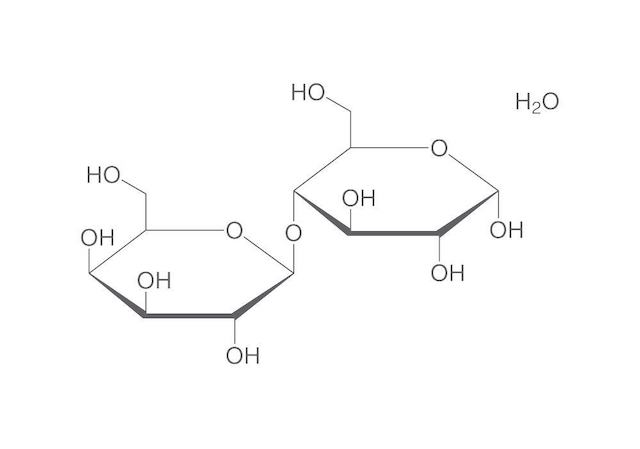Lactose Intolerance: Everything You Need to Know About It
Lactose intolerance is one of the health conditions that can often go unnoticed, especially that most people who have it can still consume an amount of it without showing any symptoms. This clearly tells us that lactose intolerance can differ from one person to another, not only when it comes to the symptoms but also to the amount of lactose they are free to consume without having any health issues.
But what is lactose intolerance exactly? And are the lactose-free foods an effective solution? Let’s read on to find out.

Lactose Intolerance: Definition
The National Institute of Diabetes and Digestive and Kidney Diseases defines lactose intolerance as: “a condition in which you have digestive symptoms—such as bloating, diarrhea, and gas—after you consume foods or drinks that contain lactose.”
But to have a strong understanding of what lactose intolerance is, we should start by defining what is lactose.
Lactose is a disaccharide made of a fusion of the glucose and galactose molecules. The origins of the name ‘lactose’ stem from the Latin word for milk, in addition to the -ose used for sugar.
Lactose is mostly contained in milk, making up to 8% of solids in it. If this tells us anything, it is that we would struggle with digestive symptoms whenever milk or dairy food is consumed in the case of a lactose intolerance. However, the severity or even existence of symptoms differs from one person to another, depending on the amount of lactose consumed and how much their body would allow before it starts to show problems.

The Difference between an Intolerance and an Allergy
We know a lot of you can be confused when it comes to noting the difference between an intolerance and an allergy.
Generally, food intolerance and food allergy can both cause the same symptoms in the person having them. However, food intolerance can only cause some temporary health problems and make the person feel ill after consuming lactose of instance, while food allergy can go beyond causing the symptoms to becoming life-threatening to the person.
Normally, a food intolerance implies two potential scenarios. The first one is that the food could not be broken down and digested properly, which manifests in symptoms like bloating, or that the food consumed is causing an inflammation to the digestive system, which can lead to diarrhea for example.

As for food allergy, this condition is triggered when the body’s immune system sees the food as an invader that must be taken out the body as soon as possible because it is threatening the body’s healthy state. Thus, your whole body reacts to the presence of the food in it, which can lead to more severe symptoms than a food intolerance.
The symptoms caused by a food allergy can include breathing difficulties, swelling, vomiting, coughing, abdominal pain and even a sudden decrease in the blood pressure level.
Even though food allergies and food intolerances can both have some mild symptoms in common, food allergies are still considered more severe. This is due to the fact that the body can give major reactions to the food consumed, even if it were a very small amount or just accidentally inhaled it. In such case, it is important to stay careful and vigilant anywhere and all the time, and always have your emergency injectable epinephrine within reach if an anaphylaxis occurs by surprise.
Be it an allergy you are dealing with or a food intolerance, we believe you should always do your best to protect yourself from both in order to avoid any symptoms or health issues that may turn out to be more severe than you would expect.

The Prevalence of Lactose Intolerance
Exactly how many people around the world are struggling with lactose intolerance the way you do? This question can cross your mind a lot, especially when none of your surroundings has this condition. However, lactose intolerance turns out to be more prevalent than you would probably expect. According to the U.S National Library of Medicine, about 65 percent of the world’s population after infancy has difficulties in digesting lactose.
More detailed statistics show that lactose intolerance can be more common in people from an East Asian descent with a rate of 70 percent of this community, while it is also widespread in other parts of the world, like populations of an Arab, West African, Jewish, Greek or Italian descent.

The Health Complications of Lactose Intolerance
Lactose intolerance can cause several health issues, particularly in the digestive system. Therefore, many people would tend to consume lactose-free foods and may even go to the extent of completely cutting off milk and dairy food from their diet.
While this might seem like an effective solution, it also comes with other health complications. Since milk and dairy foods are considered to be the main sources of calcium and vitamin D your body needs to grow healthier and stronger bones, its absence may cause more damage and make your bones weaker and more likely to break.
We understand how this sounds like a dilemma with no ultimate healthy solution to your right now. But learning about all the aspects of the problems is among the first steps to take for a healthier lifestyle and a stronger body.
In your case with lactose intolerance, the solution is to learn how to manage the intolerance in such way that you would still supply your body with the amount of calcium and vitamin D it needs, without overdosing on the lactose to the point where the symptoms would start to manifest.

Lactose Intolerance: Diagnosis
Before any medical diagnosis takes place, you might be able to detect your lactose intolerance all by yourself at first, when you start suffering from bloating, diarrhea, abdomen pain and cramps every time you consume milk or diary products.
Nevertheless, seeking a health expert’s help is always a must to stay safe and have better control over the intolerance.
During your medical diagnosis, your doctor would proceed to performing confirmatory tests in order to have more details on how your body reacts to the lactose intolerance. These tests usually include three major types:
o Lactose Intolerance Test: In this test, your doctor will be tracking your body’s reaction to a liquid that contains high levels of lactose, through blood tests.
o Stool Acidity Test: The stool acidity test is mostly done in the case of potential lactose intolerance in infants and children, by measuring the levels of lactic acids found in a stool sample. It is considered a major sign since it is the result of undigested lactose in the intestines.
o Hydrogen Breath Test: The hydrogen breath test relies on measuring the amount of hydrogen your body releases through your breath after consuming a drink that is high in lactose. In the case of a lactose intolerance where your body is unable to break down the lactose, the bacteria in your intestines will ferment it, which eventually leads to the release of hydrogen and other gases.
If you start noticing any of the symptoms of lactose intolerance before visiting your doctor, we highly recommend you do it anyways. Your doctor will give you detailed information about your condition, and the precise amounts you would be allowed to consume without experiencing any health difficulties.

Lactose Intolerance: Diet and Nutrition
As we mentioned in the above section, your dietitian or doctor is the best person to seek when it comes to effective and precise advice on the foods you would be allowed to consume in the case of lactose intolerance.
Nevertheless, there are some measures you can take by yourself to better manage your lactose intolerance symptoms, simply by controlling the foods and drinks you are consuming every day.
While it is crucial to stay aware of the foods that are high in lactose, such as bread, milk, dairy food and even some protein powders and bars, there is also a minimum you can consume every day to still supply your body with the amount of calcium and vitamin D needed.
For this reason, you should at least make sure to consume foods that are lactose-free but can still supply your body with those vitamins. Lactose-free foods can include:
- Tofu
- Almonds and dried beans
- Green vegetables such as broccoli
- Salmon or sardines
- Oranges
These lactose-free foods, as explained by the National Institute of Diabetes and Digestive and Kidney Diseases, will allow your body to benefit from calcium without struggling with the lactose intolerance symptoms. Additionally, to balance out your diet , you must also ensure a healthy amount of vitamin D for a better absorption of calcium in the bones.
, you must also ensure a healthy amount of vitamin D for a better absorption of calcium in the bones.
updates?










0